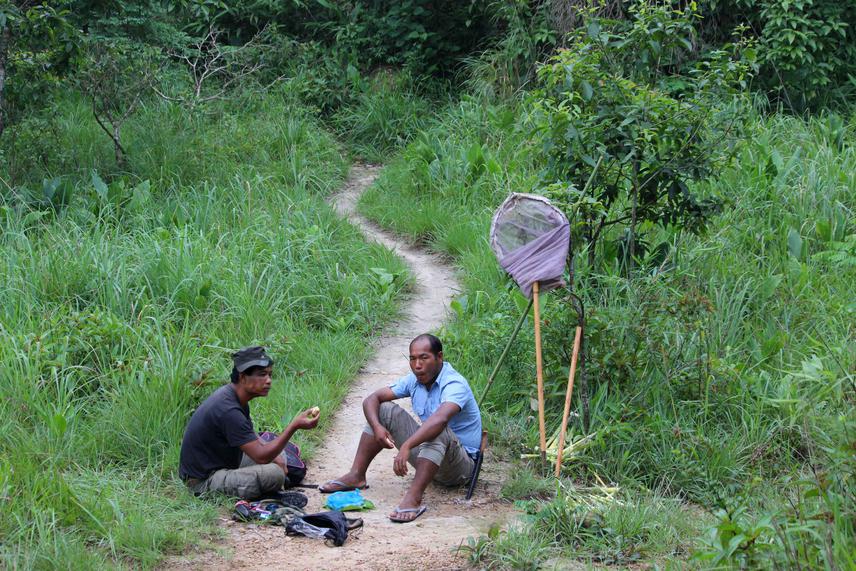Vivek Sarkar
The generic diversity of cicadas in India ranks highest in the world yet very little is known about its biology. The primary objectives of this study are to document diversity, biology and acoustics of the cicadas in Meghalaya which falls under Indo-Burma biodiversity hotspot and create a cicada call inventory with positive species identification.

Fieldwork.
In tropical forests cicadas are one of the major players of forest orchestra. Being obligate tree sap feeders and thereby the only insect group which majorly extracts the ‘locked’ resource of phloem fluids of plants, and makes it available to the next trophic level, viz. Insectivores, cicadas have an enormous ecological role to play. However, the cicadas of India have remained understudied since the early part of the 20th Century. As an inborn naturalist and trained biologist I started to understand the existing gaps in cicada-study such as need of systematic call library, regional cicada inventory, emergence period, activity pattern, habitat preferences and species specific behaviours etc. Hence the aim of this project is to meticulously fill the gaps in understanding of oriental cicadas.
This study is focused to prepare a regional inventory of cicadas along with the call library and natural history observations. At the same time, outreach program on cicadas-study will also be initiated to not only inspire young naturalists to take up the subject more rigorously but also to promote citizen science in order to produce long term data-sets for documentation and monitoring. In addition to that this project will also document cicada related folklore, and local Garo and Khasi names of different species and use them in outreach material in order to generate interest in local youth to observe and study cicadas.